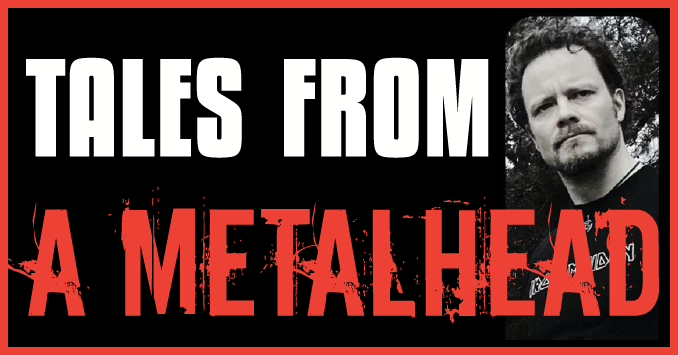
This chapter is part of a book called Tales from a Metalhead written by Metal Express Radio’s President Stig G. Nordahl. The chapters will be posted one at the time and you can find them all here.

Some of you might find this chapter a bit nerdy, but I think it’s important to talk a bit about technology. Recording devices have played a highly important role when doing interviews throughout the years. In the 80s everything was edited on 1/4″ reel-to-reel tapes. If I pre-recorded anything for a show or edited an interview, huge tape machines were the only option. There were two editing techniques. You could either go for the “flying start”, where you played the raw material from one reel and recorded the final product on to the other by jumping in and out of recording on the master, or you could cut directly on the tape with a razor blade. I worked for the Norwegian Broadcasting Corporation (NRK) as a sound engineer in 1991. They were still editing this way so I learned the techniques really well.
When I was doing interviews outside the studio in the 80s I would always use an analogue mobile cassette recorder. There were also Nagra-recorders where you could record directly onto the 1/4″, but they were very expensive and my local radio station couldn’t afford to buy those. The cassette recorders usually worked quite well, but there were some downsides. The first issue was to make sure you did not record over a previous interview which unfortunately happened a couple of times. The other issue was you didn’t get a warning if you were about to run out of tape. Sometimes I had to stop the interview to flip or change cassettes. I had to buy the cassette tapes myself so I always made sure to use all the space.

The most annoying part was when the battery was running low. The speed of the recorder would slow down and when you played the interview back on a different cassette player the speed would increase making it sound like we had inhaled helium before the interview. This could be pitched down on the 1/4″ tape, but that wasn’t easy when the recording was getting gradually slower during the interview. I still have a tape from an interview with Klaus Meine and Matthias Jabs from the Scorpions where it sounds like we’d had quite a helium party. We also have a station ID on Metal Express Radio with Paul Taylor from Winger where he sounds like Mickey Mouse, “Hi, this is Paul Taylor from Winger!” I’ll have to fix that one some day.
After cassette recorders became old fashioned I did an interview with Nicko McBrain from Iron Maiden. All the new digital recorders were taken that day so I had to use one of the old cassette recorders. I was so embarrassed and afraid he would not take me seriously showing up with the old fashioned equipment so I hid the recorder under my jacket. In hindsight it must have looked really stupid.
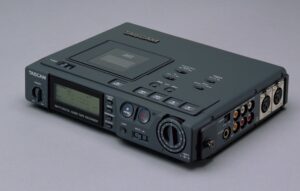
In the early 90s the first digital recorders became available or at least affordable. The first format was DAT (Digital Audio Tape). The cassettes were smaller, but more expensive than the analogue ones. The first players were very heavy and drained the batteries in no time. The advantage was that it was easier to go from recording to recording, and not record on top of the old interviews. Still, the DATs were slow to operate and they didn’t last long as portable recorders. They were used longer in control rooms though.
For a short period of time, the MiniDisc (MD) recorders became the new big thing. They were much more affordable so laymen bought them as well. A lot of people bought this system to play music instead of using CDs. I feel bad for those poor bastards who copied their CDs to MDs and threw away the CDs. The recorders were small and light and didn’t use much power. They were excellent for festivals when you have to carry the recording equipment with you most of the time. Still, I never felt comfortable with the MD. That might have something to do with a certain Whitesnake experience that I covered in a previous chapter. One time one of our crew members borowed my MD recorder to interview Mille from Kreator. I gave him thorough instructions on how to use the it. As he sat down with Mille to start recording the interview the displayed flashed NO DISC! My bad… It turned out to be a printed interview in the end.
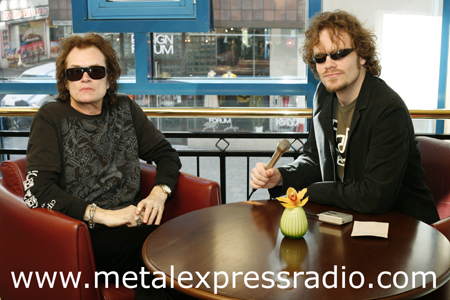
I recently found a stack of MDs where I had copied lots of my old interviews. For some reason most of them were cut midway. It’s really annoying as I probably threw away the original cassette tapes. One time at the Sweden Rock Festival I had brought a busted mini jack connector that went from the microphone to the MD. If I didn’t hold the cable in a certain position it would make a lot of noise and ruin the interview, which it did a couple of times. I have an interview with King Diamond with a lot of noise on it. That wasn’t the MD recorders fault of course, but I blame the mini jack solution which is a consumer (read: cheap) solution.
When I attended press conferences at festivals (I’ve always preferred personal interviews over the mass gathering of bands and journalists), I used to sneak to the back on the sound console to connect to an auxiliary to record the direct sound from the microphones at the table. The downside was of course that my own questions would not be recorded. I’d considered connecting my own mic to the console as well, but I guess that would be taking it too far. Without my own questions it would sound a bit like the generic interviews that the record labels send to the press some times. Those are pre-recorded answers from bands where you can record and splice in your questions so it sounds like you did the interview yourself. I have never used those. At least at the press conferences I was there asking questions. The advantage was that I would have mint sound if I asked the band to make a station ID. I asked Anthrax once and the whole band made the ID using 4 or 5 microphones.

Later on, the flashcard recorders became available in various forms, some even with built-in microphones. You recorded the interviews on a flashcard and transferred the files to a computer later for editing. The recorders are small and don’t use much battery power either. If you, in addition to all that, can use the internal mic, then it packs small which is important, especially in a festival situation. I have tested so many ways of carrying different sized recording equipment all day on the festival grounds. Backpack is practical, but it’s really a hassle if it’s hot or if you’re in the middle of a packed crowd. I even wore a “fanny pack” a few times. It was practical, but I think it looks so silly that I tried to hide it under my t-shirt. I put the smallest recorder I’ve used in the pocket of my jeans, with backup batteries in the other pocket. It was not a very comfortable solution.
You always need a pocket for the smartphone on top of that. Speaking of… There are microphones on the market that you can connect to smartphones, the downside is, as most of us know, that the battery capacity on the phones suck. That would be risky business if you are running around all day doing interviews. Smartphones can be ideal if you don’t plan publishing the audio, but want to type it out later. One of our ex-colleagues went to interview Blackie Lawless from W.A.S.P. once. He was going to record the conversation using the phone as a dictaphone, so he could type it out later. He was sweating bullets when I met him at the show after the interview. The recording app turned off the recording about every 30th second so he had to restart it over and over. After the interview Blackie told him: “Don’t you ever use that solution for recording an interview again!”
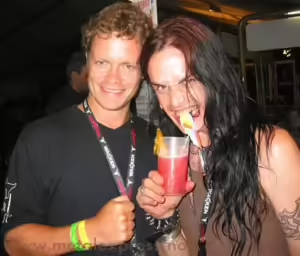
Before the smartphones there were times I had to carry a recorder, cell phone AND a camera. Usually I had a photographer with me, but not always. I have this thing that I don’t want to carry a backpack with me at festivals (yeah, quite stupid. I know!). At the Wacken Open Air festival in 2002 my pockets were filled with all this stuff. The camera was a new digital compact camera. The memory card that came with couldn’t store many pictures at all. I didn’t have a laptop back then so the memory card had to be big enough to last the whole festival. I bought it before taking off to Germany. It cost a small fortune, but I was all set for the festival. Normally I would leave these things behind in the tent/hotel room early in the evening. This time we were invited to a backstage party on the last night so I though I better bring the equipment along. It was a helluva party! I partied with some of my favorite bands at the time like Savatage, Vicious Rumors, Metalium and Nocturnal Rites. It was a memorable happening that I will get back to in a later chapter. When the party was over and we had to find our way back to the tent after buckets of beer the camera was missing. We looked everywhere in this place that was filled with drunk Metal musicians. No luck! Damn, not only had I lost the new camera with the expensive memory card but also all the pictures I had taken at the festival.
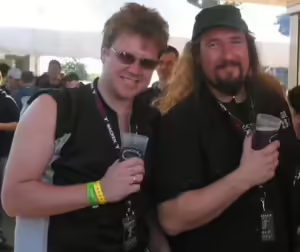
Bummer! Drunk and depressed we left the backstage area. By the exit there was a urinal and a little shed with an old woman sitting in it. I never figured out what her job was. Guarding the urinal maybe. My friend said we should ask her if someone had turned in the camera. I replied; “nah, it’s too far fetched and the camera is lost forever. I am taking a leak.” When I was done with my business my friend stood outside with the camera in his hands. Someone had actually turned it in to the old woman. We went from drunk and depressed to drunk and very happy. Thanks Ronny!
Speaking of digital cameras, I got my first digital camera when I turned 30. It had 2 megapixels resolution, no zoom and took 2 AA batteries. It took shitty pictures and the batteries would last for 15 minutes, but hey; it was digital! I brought it with me to Sweden Rock Festival in 2002. I had a photo pass so it was possible to get some good shots from the pit. Bruce Dickinson did a solo show that year and I went to the pit for the first three songs waiting for a chance to get a cool pic. All of a sudden Bruce put his foot on the monitor right above me and bent down towards my camera. It was time for the pic of century. I framed and pressed the button to perpetuate the moment, but nothing happened. Well, one thing happened. Some red letters on the display saying OUT OF BATTERY…. Yeah, I prefer indeed to have photographers with me on tour.
Thinking about it, I have some more camera stories but I’ll save those for later because this chapter is supposed to be about audio equipment. I actually bought a clever device online a while ago, for the purpose of doing phone interviews. It is smaller than a matchbox, really cheap and seems to work well. I haven’t used it for a proper interview yet though. Maybe someday…
It is of course possible and quite normal to record directly onto a PC/laptop. Even that can be risky. Two of my colleagues in the US brought their laptop to an interview with Joe Satriani. In the middle of the interview the laptop rebooted. They didn’t dare tell Joe so the interview continued as normal. They lost the interview so all we got was a station ID recorded after the laptop was back in business. The laptop made a sound when rebooting and Joe raised an eyebrow upon hearing that, but said nothing.
No matter how you record your stuff: Life is too short for interviews with poor sound! ….and sometimes size matters.
It costs a lot to keep Metal Express Radio running. Let’s face it, we’re a grassroots web radio and we do this because we love Metal. Any contributions that helps keeping us afloat are highly welcomed. We gladly accept donations on our donate page.
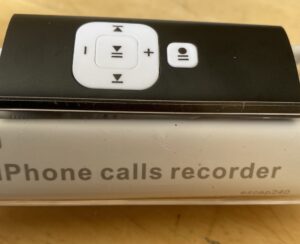

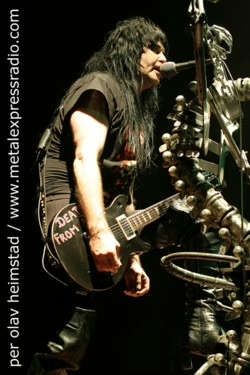
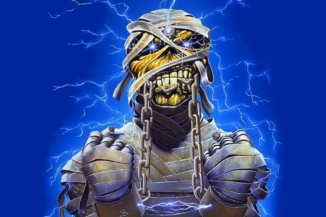

Be the first to comment